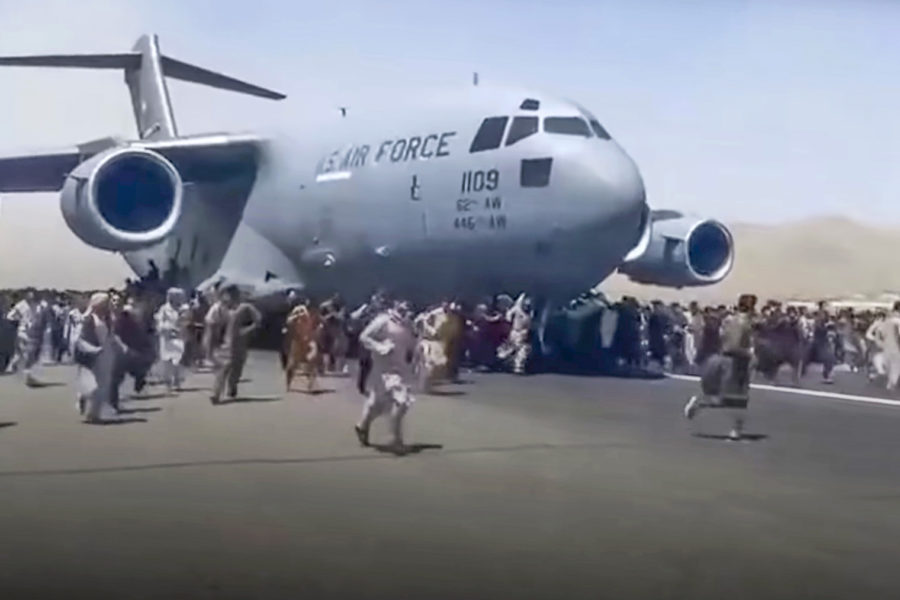The crew of a C-17 did nothing to cause the deaths of Afghan civilians who tried to cling to the jet when it took off from Hamid Karzai International Airport in August 2021, the Air Force said June 13. Civilians fell off the aircraft, and remains were found in its landing gear well when it landed at Al Udeid Air Base, Qatar.
In an email to members of the press, the Air Force announced the results of an inquiry by the judge advocates of Air Mobility Command and U.S. Central Command, as well as a review by the aircrew’s operational leadership, and based on evidence collected by USAF’s Office of Special Investigations (OSI). Air Force spokesperson Ann Stefanek said in the statement that the aircrew “acted appropriately and exercised sound judgment in their decision to get airborne as quickly as possible” in the Aug. 16, 2021, incident.
The C-17 had just landed, and had not yet offloaded its cargo of support equipment for the evacuation effort, when it was swarmed by civilians who had breached the airport’s perimeter, desperate to leave the country. Unprepared for this surge of people and unsure of hostile intentions, the C-17 crew opted to continue taxiing and take off.
“Faced with a rapidly deteriorating security situation around the aircraft, the C-17 crew decided to depart the airfield” with all speed, the Air Force said at the time.
Video footage showed numerous people clinging to the fuselage, sponsons, and landing gear. Many let go before takeoff, but video of the incident appeared to show two or three people falling off the airplane from several hundred feet up as it climbed.
“Human remains” were found in the C-17’s wheel well when it landed at Al Udeid, Stefanek said. The aircraft—tail number 2-1109, and which had deployed from Joint Base Lewis-McChord, Wash.—was apparently undamaged.
The incident occurred “during an unprecedented evacuation where resources were constrained to ongoing security and evacuation activities” at Karzai International, Stefanek said. The OSI was asked to investigate, and upon the aircraft’s landing at Al Udeid, it “processed and documented the aircraft and the remains” and handed the scene off to “the host nation police, who declined further investigation,” she said.
The aircrew’s “operational leadership” reviewed the incident and determined that the crew acted appropriately in light of the circumstances. The AMC and CENTCOM judge advocates “concurred” that the aircrew complied with applicable rules and followed the rules of engagement “specific to the event and the overall law of armed conflict,” she reported.
The aircrew “faced an unprecedented and rapidly-deteriorating security situation,” Stefanek said, and the crew’s “airmanship and quick thinking ensured the safety of the crew and their aircraft.”
The aircrew sought “appropriate care and services to help cope with any trauma from this unprecedented experience” and returned to flight status later, she reported.
The Air Force evacuated more than 200,000 Afghan nationals out of the country between Aug. 14 and 25. At least one C-17 took off with more than 800 people onboard.
“This was a tragic event and our hearts go out to the families of the deceased,” Stefanek said.
